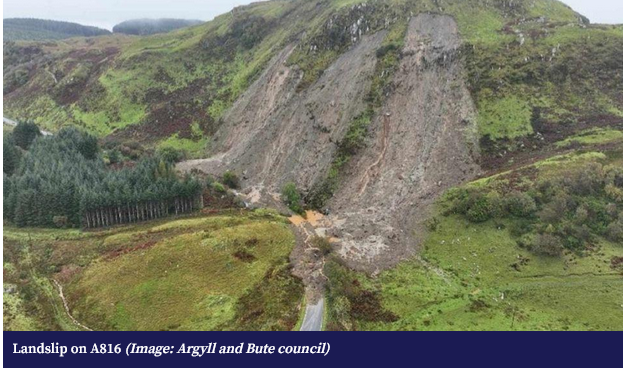
Living as we do on the western edge of Europe, in its windiest country notorious and one that is notorious for its wet weather, I had tended to assume that Scotland bears the brunt of the storms that cross the Atlantic. After the Met Office had issued warnings for Storm Alex at the end of September 2020, I completely failed to appreciate its impact in Europe until I was walking the GR52 through the Mercantour National Park this summer.
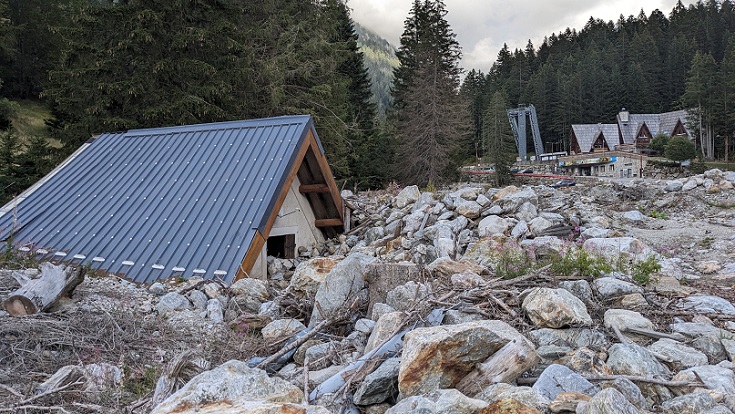
In the Alpes Maritimes, where the Mercantour National Park is situated, Tempete Alex as its known in France caused 250 – 300m (9.8-11.8 inches) of rain in 24 hours (see here). That compares to the 200mm/8 inches that appears to have fallen at Loch Eck the weekend before last (see here). Over the border in Piedmont one village, Sambughetto, received a staggering 630 mm (25 in) of rain in just 24 hours.
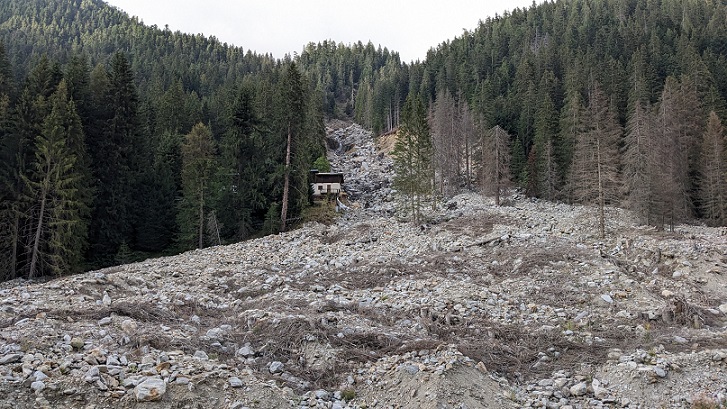
The eye of Storm Alex crossed from the Atlantic into Brittany, blowing down trees and causing floods, then headed south east drawing in wet air from over the Mediterranean. This so-called Mediterranean episode is what caused the record rainfall in the south west Alps.
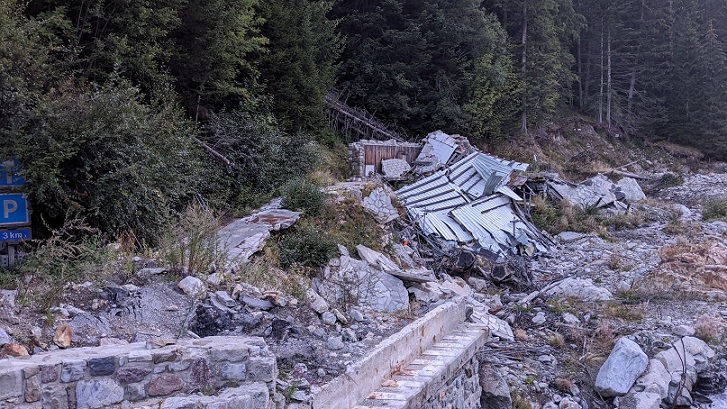
Water from the Vallee du Boreon combined with that from the Vallon de Salese and swept down Le Boreon river to St Martin du Vesubee where it met waters from the Vallon de la Madonne de Fenestre.
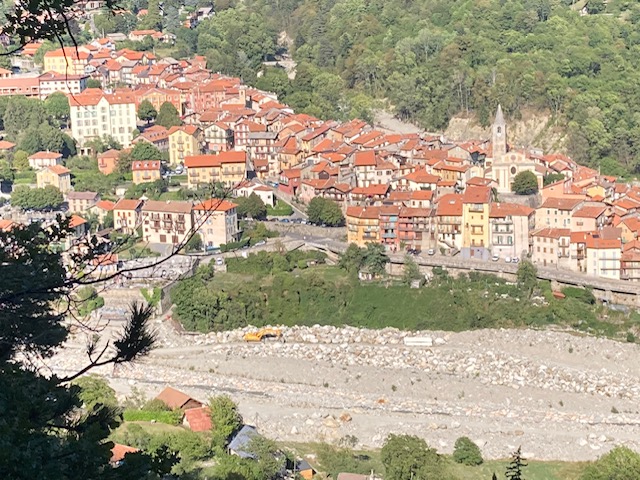
Although most of the town escaped, parts didn’t.
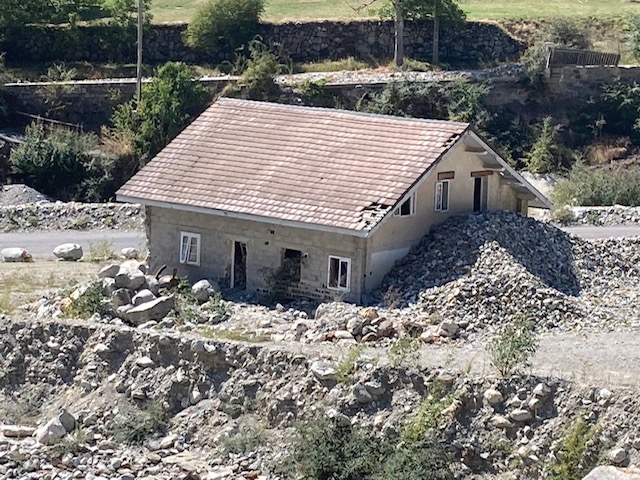
Eight people died. Two were pompiers – in France the fire service is responsible for keep people safe in floods – killed on their way to rescue people at Le Boreon.
The response of the public authorities in France
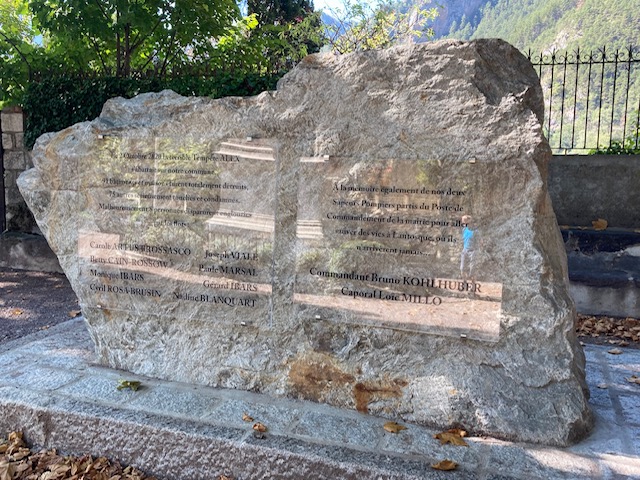
I can’t help comparing this monument to the plaque that has recently been erected to those those who died in the Stonehaven landslip train crash (see here).
While it is clear from what I have read and the people I talked to that the destruction caused by Tempete Alex had a massive psychological impact on the local community, because local and regional government and public services still exist in France to a degree that is now unknown in Scotland or the rest of the UK, the response to the flooding has been rapid.
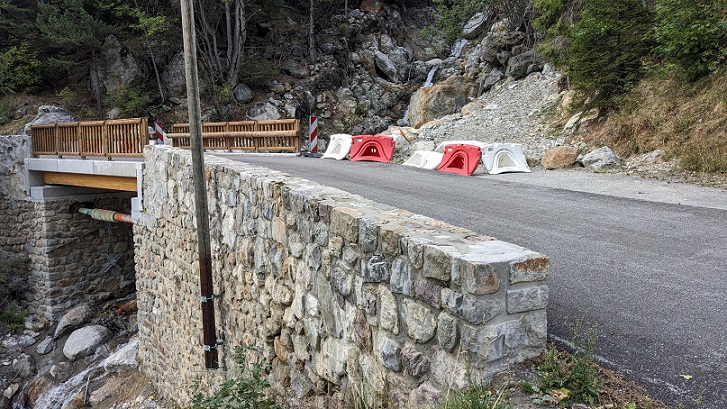
It was interesting how soon after Storm Alex all the essential infrastructure necessary to support the rural economy had been reinstated, and not cheaply either. Bridges had been replaced, roads cleared and new paths for walkers created.
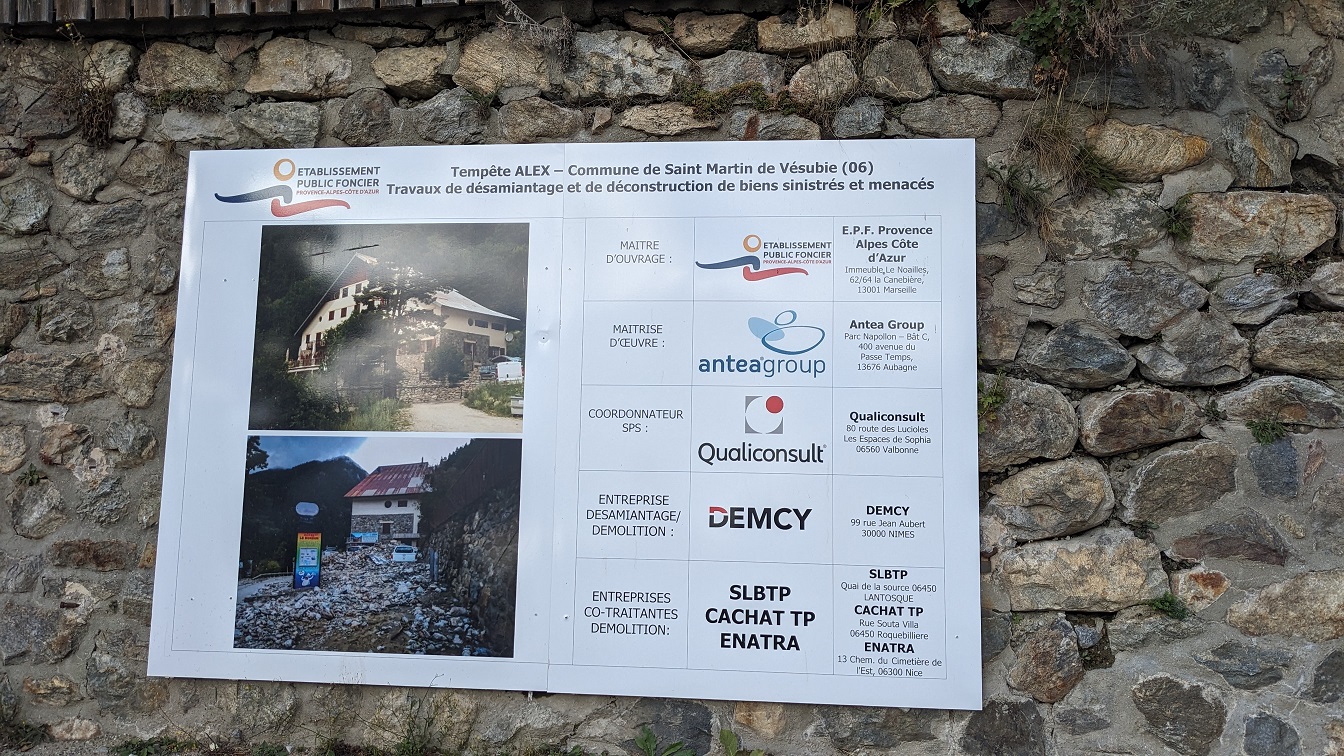
There is still work to do. In France the “etablissements public foncier” – we have no equivalent – acquire and manage land for public benefit and have specific “green” responsibilities (see here). At Le Boreon they were removing buildings damaged by the flood but also those judged at risk in future. That would be almost impossible in Scotland, we simply don’t have the necessary capacity in place to respond to and prepare for climate change.
The second and arguably more important lesson from France, however, is not their response to Storm Alex but the fact their ancestors and institutions of government had started preparing for it over 100 years ago.
The impact of Storm Alex on the ground

Walking from St Dalmas over the Col du Bara and then across to the Col du Salese through the forest there was no indication of what was to come.
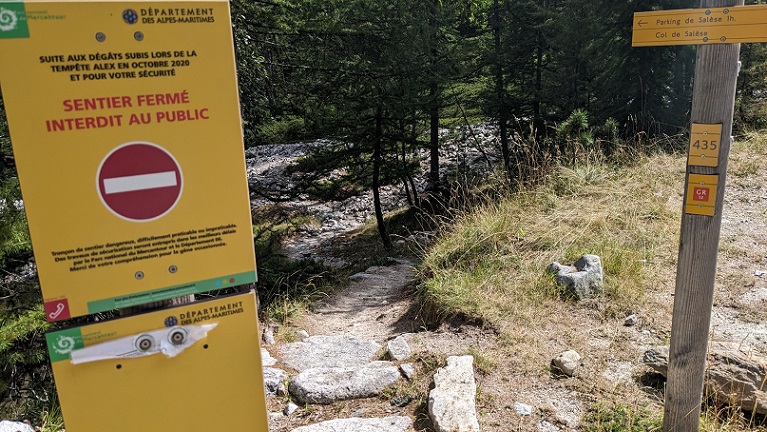
The first sign that anything had happened was at a sign a few hundred metres south of the Col du Galese where the path left the road to cross a stream. We had been advised by people in St Dalmas that we could safely ignore the warning signs and that the path was usable.
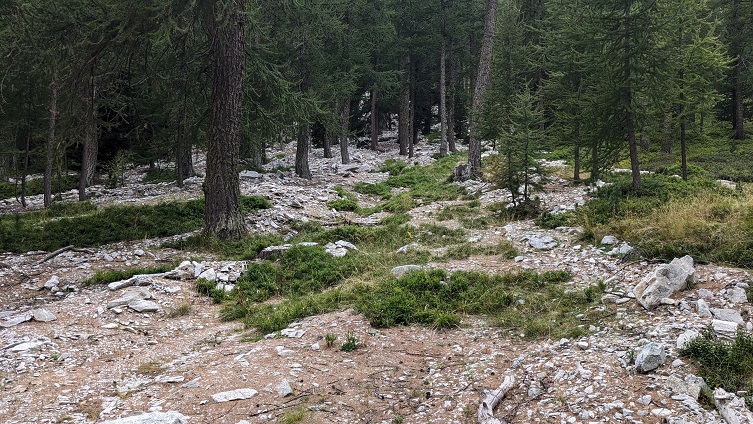
At first I did not fully appreciate the significance of what I was seeing. The water had spread out across the slope carrying significant amounts of rock debris with it but it did not look that bad or out of place.
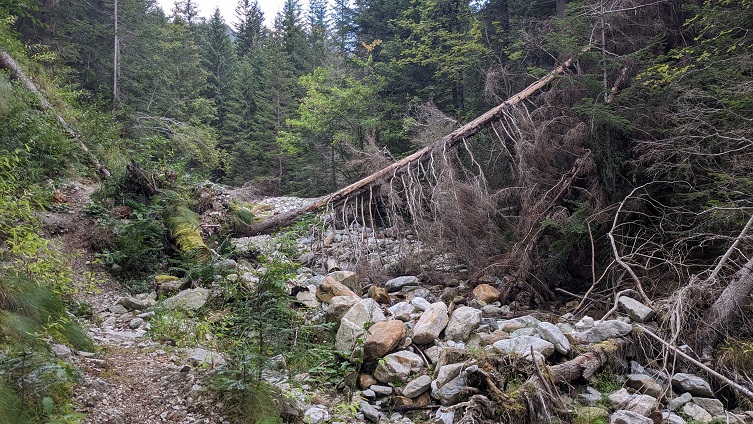
Below, however, the impact of the water was impossible to ignore and awe-inspiring.

The water had cut a swathe through the forest, carried down trees and boulders and sliced off sections of slope on either side.
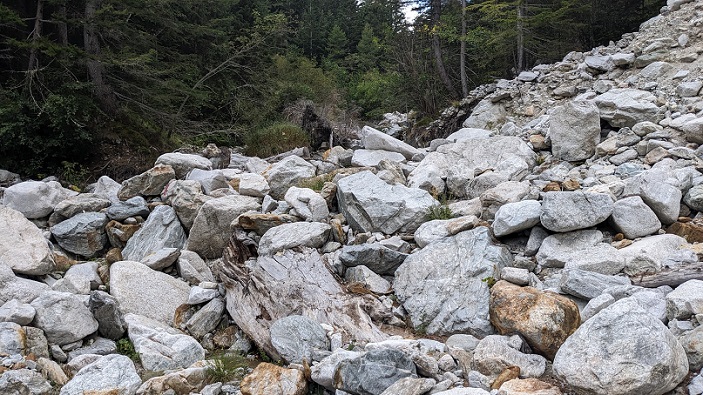
The volume of material carried down in one night was staggering. For the people living in these valleys, the sound of the water and rocks must have been terrifying.
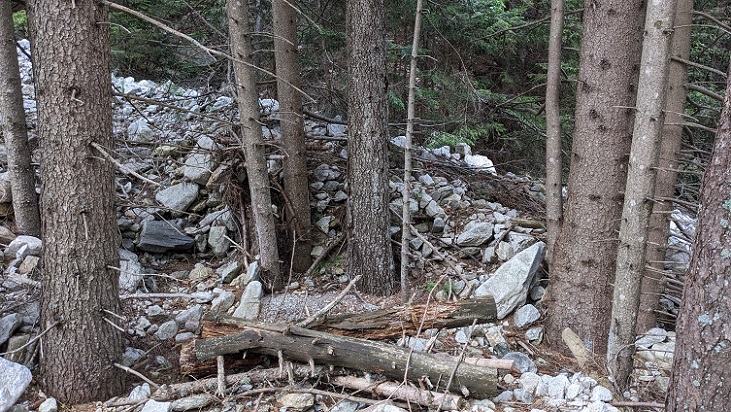
While significant numbers of trees had been swept away, others had stood firm and trapped considerable quantities of rock debris and slowed the water as it roared downhill.
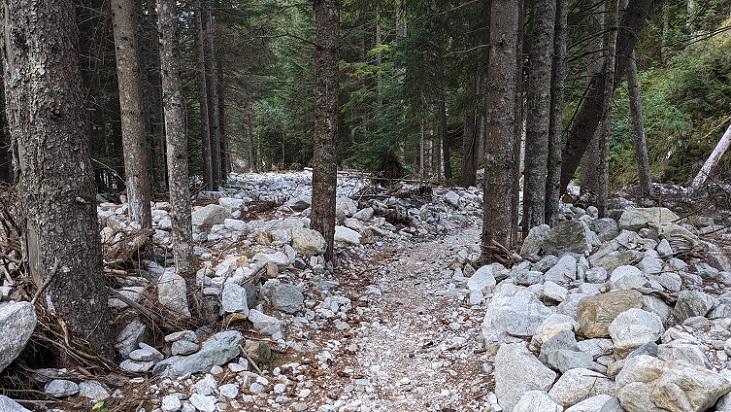 A new section of path illustrated just how much material had been swept down through and caught by the tree.
A new section of path illustrated just how much material had been swept down through and caught by the tree.
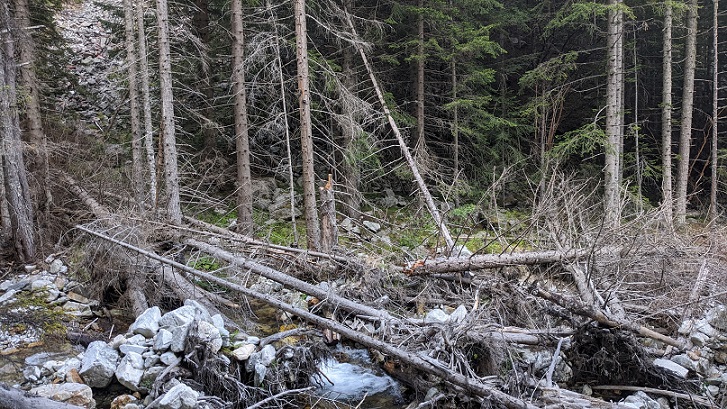
Where trees had been toppled, often had become trappedn forming dams that served to slow the flow of water and catch more rock debris.
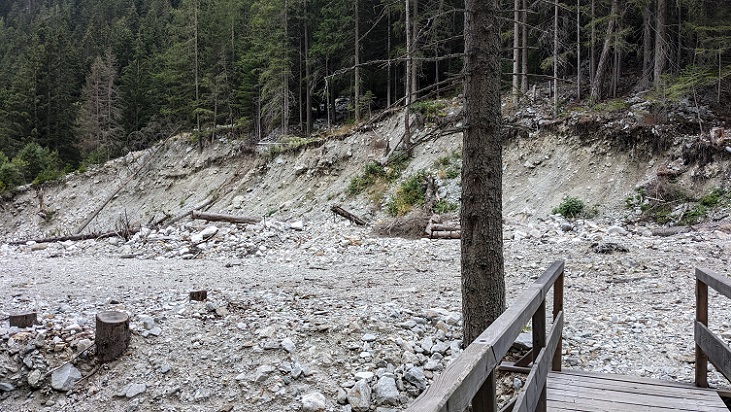
The amount of clear-up work had been significant. While not complete, I would venture the guess that more has been done in two and a half years in the Vallee de Salese to restore path networks for walkers (clearing boulders and trees, moving and building bridges) than has been done in either of our National Parks in the last five.
Walking down the Vallee du Salese through all this destruction and looking at how public authorities in France had responded, I was pondering where all the water had come from and how land-use had impacted on this.
My first thoughts were that grazing levels could have increased above the forest, speeding up water run-off there. This could have contributed to the exceptionally high levels of water in the valley below – a similar situation to what we face in Scotland as a result of overgrazing and muirburn.
While grazing levels appear to be increasing in some parts of Mercantour National Park (as I will consider in another post), I realised something else when I got a clear view out over part of the forest:
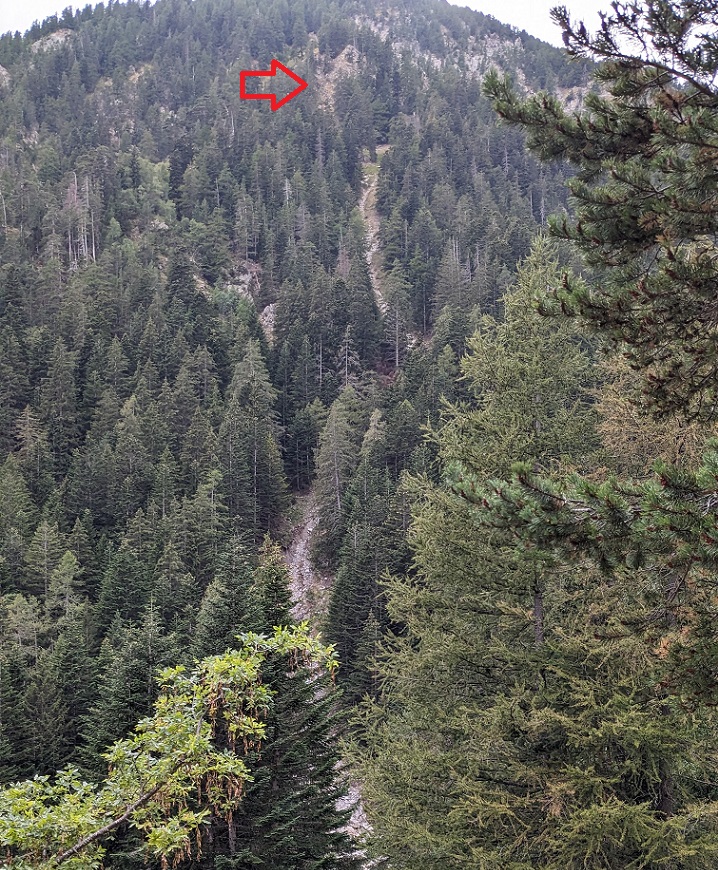
I could see almost no evidence of landslips away from the sides of watercourses. If there had been significant landslips, I would have expected to see areas with tumbled trees across the hillside. But there there were none. The destructive impact of the extreme rainfall caused by Storm Alex, spectacular as it was, appears to have been almost entirely confined to the sides of streams and rivers.
The forest appeared to have held slopes together during the deluge and stemmed water and rocks as streams and rivers overflowed.
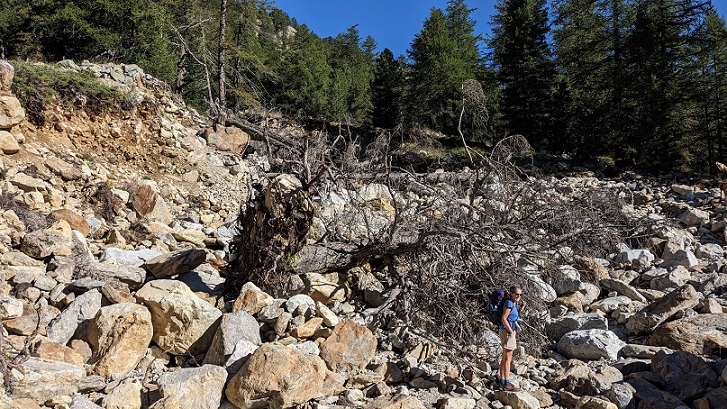 These observations were confirmed as we walked up the Vallee du Boreon the next day. The forests were more or less intact, the watercourses a war zone.
These observations were confirmed as we walked up the Vallee du Boreon the next day. The forests were more or less intact, the watercourses a war zone.
The history of forests in the French mountains
The forests I saw are not an accident. They were planned by the French state acting through local communities (not always democratically) in response to environmental degradation and the risks this caused in the 19th Century. I explained a few weeks ago (see here) how in France, unlike Scotland, most forests are now able to regenerate themselves. But, as a comment on that post highlighted, many were originally planted due to concerns about flooding and avalanches. I have previously discussed an example of that in the Pyrenees (see here) but it also happened in the Mercantour:
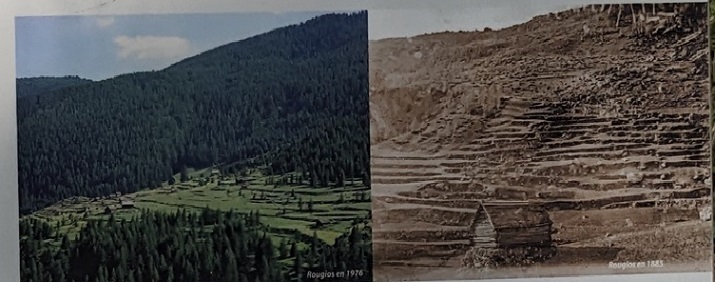
It is as a result of this history that the French were far far better prepared for Storm Alex than we were for the significantly smaller rain event which struck Scotland nine days ago.
The question for Scotland is whether we are just going to wait and see whether similar meteorological conditions to those that caused the “Mediterranean episode” of Storm Alex occur here or will we heed the warnings and lessons from abroad and start to act?
Scotland’s two National Parks, which could have been showing a lead on this – a fact finding tour to the Mercantour anyone? – have sadly been nowhere to be seen on this. The Loch Lomond and Trossachs National Park Authority (LLTNPA) appears far more interested in its own electric car fleet, so it can tick boxes with Scottish Ministers, than contributing any idea of how to stop/reduce the landslips at the Rest and Be Thankful. Its Board has still never discussed any of the landslips that have taken place in the National Park over the least five years.
A word of caution: tree planting is not a panacea for landslips
The contrast between the way the French authorities responded to landscape degradation and planted trees in the 19th Century and the time it has taken the combined forces of government in Scotland to plant a small section of the landslip prone slopes at the Rest and Be Thankful (see here) is instructive. Unlike in France too, instead of trying to tackle the problem systematically and create woodland which is able to regenerate and expand naturally, at the Rest and Be Thankful the Scottish Government is still paying a landowner to graze the slopes round the corner from the new woodland enclosure (see here).
The challenge we face is that having failed to act 150 years ago as happened in France, planting trees is likely to make no immediate difference. Small trees and scrub don’t appear to do much to prevent landslips, as you can see from the top photo and from what happened around Loch Katrine in the Trossachs four years ago (see here).
The impacts of forests on landslips is complicated and far from fully researched but some very interesting findings are now emerging from other parts of the world. This extract from a special issue of the Chinese journal forests on landslips (see here) illustrates some of the complexities:
“We find that forests play a certain role in regulating landslide susceptibility: compared with woodland, the landslide protection ability of shrubland is stronger. Furthermore, natural forests have a greater inhibitory effect on landslides than artificial forests, and compared with young forest, mature forest and over-mature forest, middle-aged forest and near-mature forest have stronger landslide protection abilities. In addition, the dominant tree species in different regions have different impacts on landslides. Coniferous forests such as Chinese fir and Cryptomeria fortunei in Qixingguan and Dafang County have a low ability to prevent landslides. Moreover, the soft broad tree species found in Qianxi County, Zhijin County, Nayong County and Jinsha County are likely to cause landslides and deserve further research attention” (For direct link to article which was about landslips around Bijie City (see here)).
Besides explaining in detail how factors such as root growth impact on slope stability the authors conclude that underlying geology is even more important. A warning for the Rest and Be Thankful where the underlying schists, which are prone to rock slope failure, may also be more likely to shed glacial debris and soils in extreme rain events.
In some places the only solution to the increased risk of landslips caused by climate change may be to re-locate infrastructure and tunnel roads.
Moreover, if we were use the planting techniques currently supported by Scottish Forestry through the Forest Grants Scheme, we could make the problem worse, not better:
- fences that displace and intensify grazing pressure elsewhere (destroying naturally regenerated woodland that might in the long term stabilise more slopes for free);
- mounding that destroys the organic content in soils which plays an important role in absorbing water.
How Scotland could address the challenge of landslips and extreme rain events
Despite these reservations and complications, the evidence from France suggests that planting bare slopes in mountain areas to offer improved protection to human infrastructure can work. After the events nine days ago it is therefore something the Scottish Government needs to consider and act upon urgently.
Planting landslip prone hillsides above human infrastructure would be simple for the Scottish Government to do as the money is already there. Instead of Scottish Forestry paying very rich companies like BrewDog and Abrdn to plant trees for carbon offsetting purposes – something that the evidence now suggests does more harm than good (see here) – the Forest Grants Scheme could be redeployed and redesigned to protect human infrastructure from landslips and flooding.
As a consequence of climate change and historic land abuse, there are now miles and miles of human infrastructure which are vulnerable to landslips in the upland areas of Scotland. Only a fraction of the land at risk would need to be planted each year for the Scottish Government to achieve its planting targets. Where landowners are reluctant to co-operate, which is what appears to have caused the delays in planting the Rest and Be Thankful, then the Scottish Government should use its compulsory purchase powers for the public good.
To ensure that the right tree is planted in the right place, the Scottish Government should set up an expert group (meteorologists, geologists and geomorphologist, hydrologists, plant biologists, foresters and civil engineers). This should be tasked with producing preliminary guidance on how, what and where to plant as well as instigating a long-term programme to research this properly.
And instead of leaving it to the market to decide where tree planting is needed, our local authorities should be asked to prioritise vulnerable infrastructure. That would maintain democratic accountability and ensure attention was still given to alternative solutions in areas where planting is unlikely to work. Our National Park Authorities could then be asked to lead on developing responses to landslips and flood prevention in wilder areas away from human infrastructure.

No, forests do not totally prevent erosive events, but they can ameliorate them by moderating the run off, soil binding, dissipating flow energy and providing an after event repair capacity. http://www.andywightman.com/archives/3291
Good article. I live for some of the year in the Cevennes National Park. In some ways it’s history, problems and issues are more akin to the Scottish NPs than the Alpine parks. Very happy to have an email conversation about that – and you should visit! Some years ago I suggested to the Cairngorms NP (at this distance I can’t remember to whom) that they set up a twinning arrangement with the Cevennes NP. The response was sniffy to put it no higher but there could have been so much knowledge sharing.
An excellent parable about tree planting in France
https://www.youtube.com/watch?v=epTqUnKsuUY
“The Man who planted trees”
Available in French or English